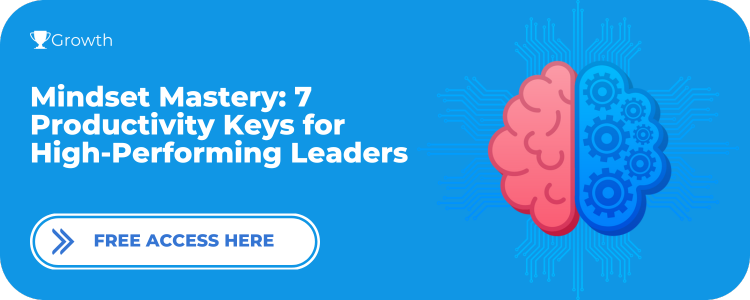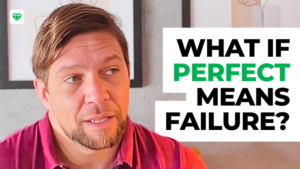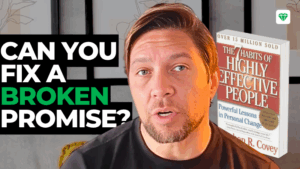
✅ FREE ACCESS: Mindset Mastery: 7 Productivity Keys For High-Performing Leaders
Ever imagined how different your life could be with the power to make decisions with certainty?
Imagine a world where every choice you make propels you toward the life you truly want and deserve.
Today, we’re going to learn how to make decisions using 4 effective styles and 4 powerful tools that when combined have the power to transform uncertainty into clarity and redefine your approach to decision-making.
But before we get into it, make sure you grant your lifetime access to our free Workbook: Mindset Mastery: 7 Productivity Keys for High-Performing Leaders.
This is your chance to make the mindset shift you need to make decisions with confidence by using the 7 mindset keys of high-achievers.
How to Make Decisions
Knowing how to make decisions effectively is critical for navigating the complexities of life.
Whether it’s managing personal finances, making career moves, or handling day-to-day challenges, the decisions you make will steer your journey.
We will explore 2 main topics to enhance your decision-making toolkit.
- Decision-Making Styles: We will learn 4 styles to make decisions in different situations.
- Decision-Making Framework: We will learn 4 tools you can use when making decisions.
The goal is to equip you with the knowledge and tools to make informed and effective decisions in different aspects of your life, especially when under pressure.
How to Make Decisions Using 4 Key Styles
The first thing we should cover is the 4 decision-making styles.
Psychologists identify 4 distinct styles of decision-making.
- Analytical
- Conceptual
- Directive
- Behavioral
Analytical Decision-Making
In the analytical style, decisions are based on data and logical reasoning.
This approach is akin to a scientist examining a hypothesis: every decision is scrutinized through the lens of logic and factual data, ensuring that choices are not only well-informed but also impartial and grounded in reality.
For example, using analytical decision-making for your personal finances is a great strategy because you would categorize your spending like housing, food, utilities, and leisure, and then analyze how these items align with your financial goals.
- Are you spending too much?
- Could you be saving more?
- What are your financial priorities?
Analytical decision-making would help you make informed choices that align with your long-term goals.
Conceptual Decision-Making
Next, we have the conceptual decision-making style, which is focused on the big picture, looking beyond the immediate details to see the broader implications of short-term situations.
This style is ideal for long-term planning and creative problem-solving, as it allows for considering multiple perspectives and potential outcomes.
Imagine you’re considering a career change.
With a conceptual decision-making approach, you would consider how this change aligns with your long-term career aspirations and personal growth.
You would think about the new skills you need to acquire, the potential for future advancement, and how this move fits into your overall life goals, like work-life balance or personal fulfillment.
This style enables you to make a decision that’s not just about a job change, but about shaping your future career path and personal development.
Directive Decision-Making Style
The Directive Decision-Making Style is focused on quick and decisive action.
This approach is perfect for situations requiring immediate resolution.
To be successful in this approach you need to base your decisions on established rules, personal experience, and principles, avoiding lengthy deliberation.
Needless to say, this decision-making style relies on your mindset more than on external factors.
So, building a mindset around the principles you admire will help you make directive decisions.
If you want to know more about how to build the proper mindset to prepare you to make better life choices, you can check our content: Growth Mindset Shift: 5 Steps to Become Your Best Self.
Behavioral Decision-Making Style
Last but not least, let’s talk about the behavioral decision-making style.
The behavioral style is a good fit when you need to build consensus or navigate complex interpersonal dynamics.
Instead of making unilateral decisions, aim for collective agreement.
Use techniques like group discussions, brainstorming sessions, or voting to reach a consensus.
Make sure the final decision reflects the inputs and considerations of the group, showing that all voices have been heard and valued.
The behavioral style is the style of a diplomat, always seeking harmony and understanding.
Each of these styles has its strengths and weaknesses, using one or another in different situations is key.
How to Make Decisions Using a Practical Framework
Now, let’s turn our attention to how to make decisions using a practical framework.
As the name suggests, a framework is a group of tools and techniques you can use in different scenarios.
You can apply them to different decision-making styles.
Pros & Cons List
The first tool in our decision-making framework is the Pros and Cons list.
It’s a classic yet powerful tool that helps you weigh the benefits and drawbacks of a given situation.
This tool can be used in Analytical Decision Making Style.
Here’s how you can use it:
- State your desired outcome.
- Make two columns, ‘Pros’ and ‘Cons.’
- Jot down positives and negatives, considering factors like cost, benefits, and impact.
- Rate each item from 1 to 3 based on importance.
- Tally the numbers in each column.
The side with the higher total indicates the better option.
Scenario Planning
The second tool in our decision-making framework is Scenario Planning.
This one is about imagining different outcomes and planning accordingly.
This one is a good fit for the Conceptual Decision-Making Style
Here’s how to apply:
- Define the desired outcome.
- Brainstorm Possible Scenarios, both likely and unlikely.
- For each imagined scenario, consider the potential impacts, responses, and consequences.
- Create a plan for each scenario, outlining steps to take if that particular outcome occurs.
Revisit and update your scenarios and plans as new information or changes occur.
Stress Management
The third tool in our decision-making framework is The Stress Management tool. It is critical to making decisions under pressure.
It’s especially powerful to help with the Directive Decision-Making Style.
In the book Innercise, John Assaraf suggests what he calls the “Awareness, Intention, Action Innercise”, a 6-deep breath exercise followed by 3 orienting stages.
Here is how to use this tool according to the book:
First, take six deep rhythmic breaths in through your nose and out through your mouth, like you are blowing out of a straw.
As you breathe in, be aware of your physiology, your mental and emotional state, and the behavior you are engaged in. This is the awareness stage.
After completing the 6 breaths and awareness stage, ask yourself:
“What is my intention for this moment?” Is it to be angry? Sad? Mad or frustrated, or to be calm and able to respond instead of react?”
This is the Intention stage.
Last, once you choose your intention and direction, take the simplest and smallest step toward achieving your goal. This is the action stage.
This tool will give you the buffer you need to make choices as quickly as possible without compromising results even and especially when you are under pressure.
Eisenhower Matrix
The last tool in our decision-making framework is the Eisenhower Matrix, which helps you prioritize options based on their urgency and importance.
This is the most complete tool and it’s especially powerful for highly complex situations.
In the Mindset Mastery Workbook, you will learn how to successfully make critical and complex decisions using the Eisenhower Matrix in different situations.
By granting your free lifetime access to this workbook today, you will not only master the art of making complex decisions now but also, have access to all future updates at no cost. The link is in the description.




